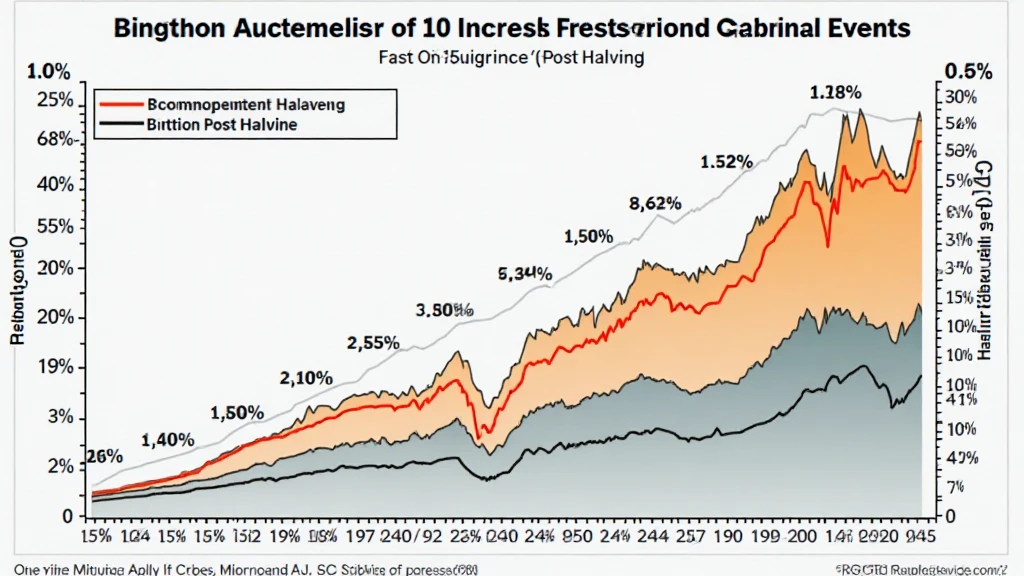Introduction
As of 2024, the cryptocurrency market has witnessed significant fluctuations. With $4.1 billion lost to DeFi hacks in 2024 alone, investors are looking for more stable avenues to navigate the crypto waters. One such avenue is understanding the dynamics of Bitcoin halving. But why does it matter?
Every four years, the Bitcoin halving event reduces the rewards given to miners by half, directly impacting the supply of Bitcoin and, consequently, its price. Historical data shows that past halvings have led to substantial price increases in the months following the events. This analysis aims to delve into Bitcoin halving historical data, highlighting its implications for investors.
Understanding Bitcoin Halving
Bitcoin halving is a fundamental aspect of the Bitcoin protocol. It’s designed to control inflation by reducing the rate at which new bitcoins are created over time. Here’s how it works:

- Bitcoin miners currently receive 6.25 BTC for solving a block.
- In 2024, this reward will drop to 3.125 BTC.
- This halving process will continue roughly every four years until the maximum supply of 21 million bitcoins is reached.
The Historical Context of Bitcoin Halving
To understand the impact of halving on the price of Bitcoin, we can analyze previous events:
1. The First Halving (2012)
The first Bitcoin halving occurred on November 28, 2012. The reward dropped from 50 BTC to 25 BTC. Here’s what followed:
| Month | Price (USD) |
|---|---|
| November 2012 | $12 |
| December 2013 | $1,200 |
The price skyrocketed nearly 10,000% in just over a year. This is the primary reason why many investors are particularly bullish about upcoming halvings.
2. The Second Halving (2016)
The second halving, which took place on July 9, 2016, reduced block rewards to 12.5 BTC. Again, the market responded positively:
| Month | Price (USD) |
|---|---|
| July 2016 | $650 |
| December 2017 | $19,000 |
The price surged over 2,800% in just 17 months, fueling the narrative that halving events catalyze bullish trends.
3. The Third Halving (2020)
The most recent halving occurred on May 11, 2020, cutting the reward to 6.25 BTC. The market conditions were different due to the COVID-19 pandemic, yet the results were impressive:
| Month | Price (USD) |
|---|---|
| May 2020 | $8,500 |
| April 2021 | $64,000 |
This represented a growth of 650% in about 11 months, confirming that halving impacts price positively in the long term.
What Does It Mean for Future Halvings?
With the next halving expected in 2024, many are speculating how it will influence the Bitcoin market. Here are some insights based on historical data:
- Investor Sentiment: Past halvings have created positive sentiment in the community, leading to increased buying pressure.
- Supply and Demand: Reducing the supply of new bitcoins creates scarcity, often driving up the price as demand remains constant or increases.
- Long-term Investment: Many experienced investors see halving as a pivotal event when planning long-term strategies.
Analyzing Bitcoin Halving in the Vietnamese Market
In recent years, Vietnam has emerged as a critical player in the crypto landscape. Recent data suggests:
- Vietnam’s crypto user growth rate reached 72% in 2023.
- The country is projected to expand its crypto economy, with over 15% of its population engaging in some form of cryptocurrency investment.
The increasing adoption makes the upcoming halving particularly relevant. Local users who have benefited from the bullish trend in previous halvings might double down on Bitcoin investments.
Final Thoughts
Bitcoin halving marks a critical moment in the life cycle of Bitcoin and offers valuable insights into market behavior. The historical data shows clear patterns of price appreciation following each halving, making it a point of keen interest for investors. As we look towards the next halving in 2024, understanding these dynamics can be crucial for formulating investment strategies.
For Vietnam, an emerging market for cryptocurrency, engaging with Bitcoin halving could mean not just leveraging historical insights but also positioning oneself advantageously in a rapidly growing digital economy.
Author’s Note
This analysis has been constructed to provide foundational insights into Bitcoin halving and its historical impact. Dr. Nguyen Thanh, a blockchain economist and author of over 20 research papers in the field, emphasizes the importance of historical patterns in predicting future trends.
Always consult local regulators when making any financial decisions. Not financial advice.






